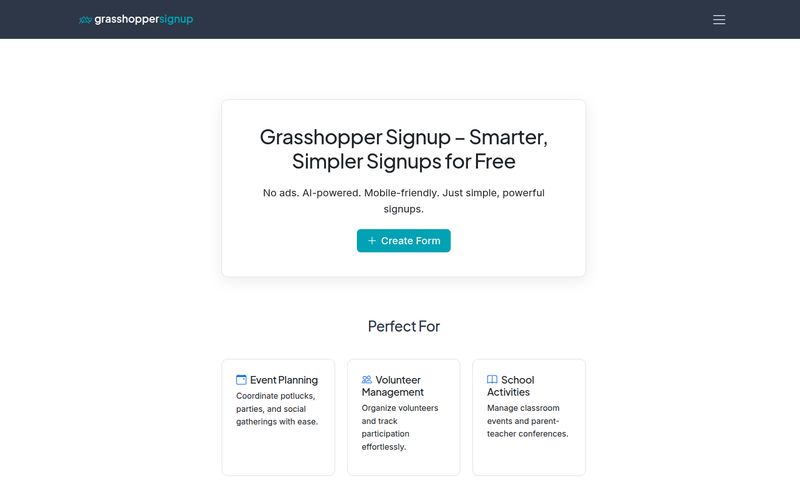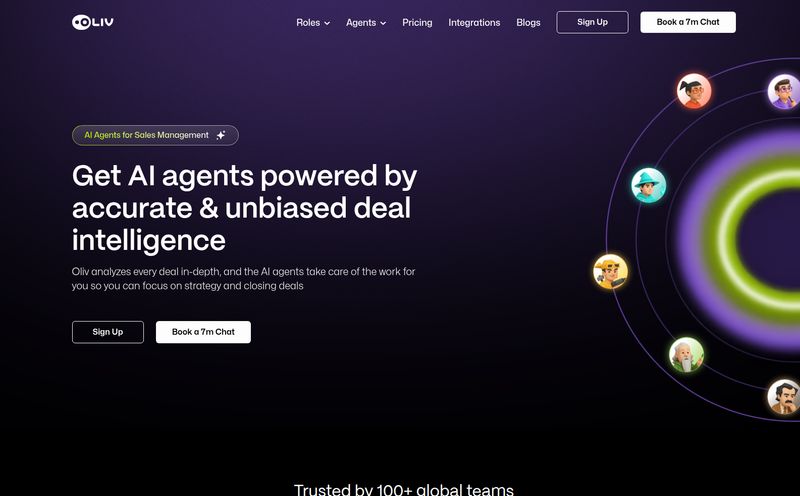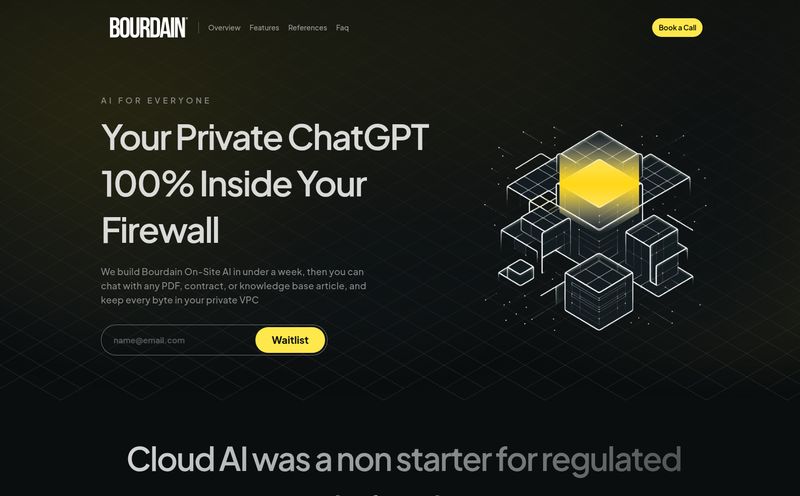Another Monday. You open your laptop, and the familiar wave of dread washes over you. A dozen emails asking, "what's the status on X?" Slack is blinking with messages about a file no one can find. And that one critical project? It's being tracked on a spreadsheet that looks like a Jackson Pollock painting. We've all been there. For years, I’ve been on a personal quest for the Holy Grail: a single project management tool that doesn’t try to be everything to everyone, but instead does a few things exceptionally well.
It’s a crowded market out there. You have your Kanban boards, your Gantt charts, your all-in-one behemoths that require a PhD to operate. Then, every so often, something new pops up on my radar. This time, it’s a platform called Cognicio. It’s not making the same loud noises as some of the big players, but what it is doing has me genuinely intrigued. So, let’s pull up a chair, grab a coffee, and talk about whether this could be the tool that finally tames your team’s chaos.

Visit Cognicio
So, What is Cognicio, Really?
On the surface, Cognicio is a project management software. Big deal, right? But that’s like saying a smartphone is just a telephone. When you look under the hood, Cognicio feels less like a generic task manager and more like a central nervous system for specific types of businesses. It's designed to manage not just projects and tasks, but also the stuff that goes along with them—both digital files and, get this, physical assets.
In my experience, this is where most PM tools fall flat. They're great for tracking a software development sprint but are completely lost when you need to manage a fleet of vehicles, a set of specialized equipment, or even the maintenance schedule for a building. Cognicio seems to have been built from the ground up with this in mind. It's not just about the who and the when, but also the what and the where.
The Features That Actually Matter
Let's get down to brass tacks. A tool is only as good as its features, but I’m not going to just list them off a marketing page. Let's talk about how these things work in the real world.
More Than Just a To-Do List
Of course, it has project and task management. You can assign tasks, set deadlines, and track progress. But the platform seems focused on accountability. It’s not just about ticking a box; it’s about creating a clear record of who did what and when. This is huge for teams that need solid record-keeping, whether for internal audits or client billing. It moves beyond a simple “to-do” and into a system of record.
Taming Your Digital (and Physical) Stuff
This is the part that really caught my eye. Cognicio explicitly offers digital and physical asset management. Think about a marketing agency managing creative files alongside promotional materials stored in a warehouse. Or a parks and recreation department tracking maintenance on playground equipment while also managing event permits. Being able to link a task directly to a physical asset within the same system? That’s a game-changer. It stops the madness of tracking tasks in Asana, files in Dropbox, and inventory in a cursed Excel sheet.
The Unexpected Power of Custom Forms
I’ll admit, “custom forms” doesn’t sound very sexy. But stay with me. Cognicio allows you to create custom forms for things like inspections, client approvals, or safety checks. Imagine a restaurant manager using a tablet to run through a daily opening checklist that automatically logs the results. Or a field technician getting a customer to sign off on a repair right on a custom form, which is then instantly attached to the project. It connects the on-the-ground work with the back-office management in a way that’s surprisingly elegant. No more lost paperwork.
Who Is This Actually For?
This is not a one-size-fits-all tool, and I love that. So many platforms try to appeal to everyone and end up being perfect for no one. Cognicio seems to have a clear idea of its ideal user. The website specifically calls out solutions for:
- Restaurants: Managing daily operations, maintenance schedules for kitchen equipment, and staff checklists.
- Parks & Recreation: Handling event management, facility booking, and tracking maintenance on public assets.
- Healthcare: Aiding in facility maintenance, managing equipment logs, and ensuring compliance checks are documented.
If your work involves managing physical things, places, or events in addition to digital tasks, you’re probably nodding your head right now. This is a tool built for the operational side of a business, not just the creative or dev side.
The Good, The Bad, and The Internet Connection
No tool is perfect. Let's be real. After digging around, here's my honest take on the highs and lows.
What I Like (A Lot)
The biggest win for me is the customization. The ability to adapt it to different workflows without needing to be a developer is fantastic. It’s also cloud-based, which is table stakes these days, but the real-time data transmission means everyone is always looking at the most current information. No more, "Are you sure you have the latest version?" The interface is reportedly easy to use, which lowers the barrier to entry for the whole team. A powerful tool is useless if nobody wants to actually use it.
Potential Hiccups
It's not all sunshine and rainbows. Being a cloud-based software, you're at the mercy of your internet connection. If you have spotty Wi-Fi, you’re going to have a bad time. That’s just the reality of SaaS. Also, a few whispers suggest that occasional platform upgrades can lead to some temporary downtime. While this is pretty standard for any evolving software, it's something to be aware of if your operations are running 24/7. You'd want to understand their maintenance schedule.
So, How Much Does Cognicio Cost?
Ah, the million-dollar question. As of my research, Cognicio doesn't list its pricing publicly on its site. Don't panic! This is actually pretty common for specialized B2B software. It usually means the pricing is customized based on your team size, the specific features you need, and your industry.
My guess? They operate on a quote-based model. You'll likely need to contact their sales team for a demo and a personalized price. While some people hate this, I see it as a good thing. It means you're not paying for a bunch of features you'll never use. You get a solution that fits your business, and a price that (hopefully) reflects that.
Frequently Asked Questions About Cognicio
Is Cognicio easy for beginners to learn?
From what I've gathered, ease of use is one of its main selling points. Because it can be customized to a specific workflow, you can strip away the noise and present a much simpler interface to your team than many all-in-one platforms. The learning curve seems gentler than with more complex systems.
Can Cognicio really track physical equipment?
Yes, and this is one of its most compelling features. You can manage both digital assets (like documents and images) and physical ones (like vehicles, tools, or facilities). You can tie maintenance tasks, inspection forms, and user manuals directly to a specific asset in the system.
What kind of businesses would get the most out of Cognicio?
Businesses with a strong operational component seem to be the sweet spot. Think less about a pure-digital marketing agency and more about businesses that manage facilities, events, physical products, or a field service team. The mentioned industries—restaurants, parks & rec, and healthcare—are perfect examples.
Does Cognicio have a mobile app?
As a modern, cloud-based platofrm, you can definitely access it through a mobile browser. For a dedicated app, you'd want to check directly on their site or the app stores. Given their focus on on-the-go tasks like inspections and approvals, a solid mobile experience would be crucial, and I'd be surprised if they didn't offer one.
How does the real-time data work?
Because it's a cloud-based tool, any update made by a user—whether completing a task, filling out a form, or changing a project status—is instantly synced to the central server. This means anyone else viewing that project will see the change immediately, provided they have an active internet connection.
My Final Verdict
So, is Cognicio the one tool to rule them all? No, and it’s not trying to be. And that’s what makes it so interesting. It has carved out a specific niche for itself and built a toolset that serves that niche incredibly well. If you’re a solopreneur who just needs a simple Kanban board, this is probably overkill.
But. If you’re managing a team that interacts with the physical world—maintaining facilities, inspecting equipment, running events, managing inventory—then I think Cognicio is absolutely worth a look. It bridges the gap between the digital and the physical in a way few other project management tools do. It’s a refreshing approach in a sea of sameness. It might just be the thing that finally gets your entire operation speaking the same language.
Reference and Sources
All information in this review is based on publicly available data about the Cognicio platform. For the most current features and to request a price quote, please refer to the official Cognicio website.



